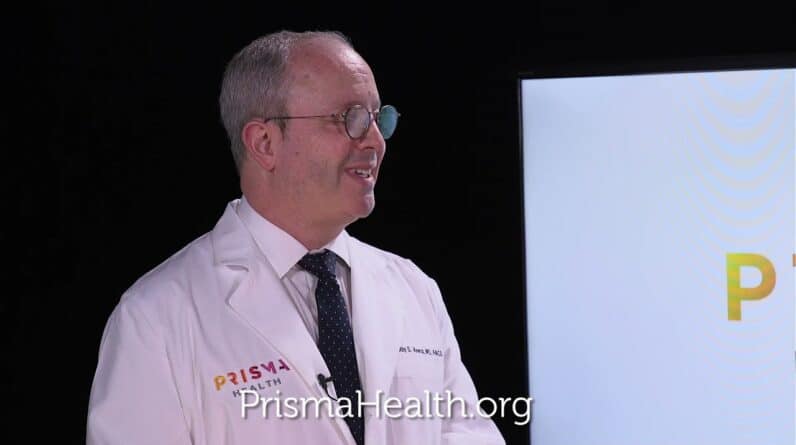
Dementia Discovery That is Leaving Doctors Speechless (Try This Tonight)
Better than Morphine For Joint Pain… Yet Safer Than Aspirin?
Retire With Freedom. Start Earning Extra Cash Today.
Healing Knee Injuries Naturally
Many people over 50 suffer from different injuries to their knees, which can be a temporary or permanent problem. In this article, I’ll detail some natural remedies for healing knee injuries naturally.
Knee injuries can occur if you do not keep your knees healthy. Injuries to the knee can be a result of sports or accidents. Knee injuries range from bruising and torn ligaments to kneecap dislocations and fractures. Knee injuries can affect everyday activities like sitting, standing, and walking, which are necessary for an active lifestyle.
There are several cures for different kinds of knee injuries ranging from sprains, torn cartilage, dislocations, stress fractures, and degenerative conditions such as osteoarthritis. Knee injuries can be treated with natural remedies that include a mix of vitamins and minerals to help reduce swelling and promote healing. Physical therapy can help reduce swelling and increase your range of motion.
Natural remedies are a popular treatment for preventing and healing different kinds of knee injuries. It is important to note that with any kind of knee injury, you should always consult an orthopedic doctor as soon as possible to determine the severity of the injury and find out if there are any other remedies needed for healing.
Here are some natural remedies for healing knee injuries:
Degenerative Conditions
Osteoarthritis is characterized by painful joints, swelling, stiffness, and limited motion. A variety of exercises can help relieve pain from degenerative conditions while increasing your range of motion in your knees.
Healing Knee Injuries Naturally – Swimming Is Our #1 Recommendation
Before starting any exercise program, consult your doctor to find out what type of exercises are recommended for you.
Loosening up the joints of your knees can prevent stiffness and promote flexibility. Loosening up your joints helps reduce pain in your knees and increases your range of motion. Try some of these exercises to loosen up the joints in your knees:
Swimming is an effective way to help relieve pain from degenerative conditions while increasing flexibility in your legs. Swimming is a low-impact workout that puts less stress on joints while still keeping you active.
Make sure you warm up before and after swimming by performing some gentle stretches. It is important to follow the warm-up and cool-down routines in order to prevent injuries.
Healing Knee Injuries Naturally – Proper Swimming Form
Swimming has been shown to increase flexibility in joints, improve joint health and reduce pain. It can also help prevent injuries like pulled muscles, strained ligaments or broken bones. Make sure you follow these tips when swimming:
Do not bend your knees during strokes. A straight-leg stroke can help strengthen your legs by keeping them straight while water flows over them. This will trigger a stretch reflex that helps keep your legs strong and flexible while engaged in the water.
Maintain a vertical or near-vertical torso when swimming. Keep your head down and look straight ahead towards the bottom of the pool to let the water flow over your shoulders in a natural way.
Wear good-fitting swimwear. Wearing good-fitting swimwear can help minimize injuries on your hips, lower back, and knees while swimming. A wide-cut style can help reduce pressure on your joints and prevent friction from rubbing against your skin.
Vary Your Swimming Hurdles
Swimming has been shown to increase flexibility in joints and improve joint health while reducing pain from degenerative conditions. It can also help prevent injuries like pulled muscles, strained ligaments, or broken bones. Targets on the pool floor help you make sure you maintain a straight back while swimming.
Other exercises that can help loosen up your joints before you have a knee problem include:
Crunches: This exercise helps to stretch and lengthen the hip flexor muscles. It is an excellent exercise for strengthening your lower body.
Lunges: This exercise helps to stretch and strengthen your hips, quads, hamstrings, and calves. You should feel a stretch in your knees as you bring your legs back from the air toward yourself as well as at the top of the movement.
Side Lunges: This exercise helps to stretch and strengthen your inner thighs. Make sure your hips remain square as you step to the side and keep your knees pointing in the same direction as your toes.
Wall Angels: This exercise will help strengthen your quadriceps, hamstrings, calves, glutes, and hip flexors. Stand with your back against a wall and raise one leg up while bending it at the knee. Slowly move your leg down to the floor about two inches from the floor before making small circles with it for 30 seconds. Repeat this exercise four times on each leg before switching direction.
Seated Glute Bridges: This exercise helps to stretch and strengthen your glutes, hamstrings, and hip flexors. You should feel a stretch in your hips as you bend one knee and pull it toward your chest. Raise the top leg up to the side of your body, keeping the chin parallel to the ground. Lower back down onto your opposite knee before repeating on each side.
Push-Ups: This exercise helps to strengthen your core, shoulders, arms, and triceps while stretching your muscles along with increased flexibility in the arms, hips, and wrists. To do a push-up properly you must keep a straight line from head to ankles as you lower yourself down toward the floor for every rep.
Leg Lift: This exercise helps to strengthen your calves, hip flexors, and core while stretching your arms, shoulders, and back. Sit in a chair with your legs straight out in front of you then lift your legs up toward the ceiling as high as you can reach. Your feet should be just off the floor while you hold this position for two seconds before slowly lowering back down. Repeat for reps to fatigue before switching direction.
Abdominal Exercises: These exercises help coordinate the nervous system of the body by activating certain muscles at a speed that is quicker than they normally would move on their own. This helps activate your abdominal muscles that are responsible for keeping everything in place while providing core stability throughout most of the body’s movements.
Leg Raises: This exercise activates the muscles of your abdominal region. Complete fifteen to twenty reps on each side.
Seated Leg Raises: This exercise activates the same muscles as regular leg raises but targets them at a different angle. Sit down on a chair with your legs straight out in front of you and raise your legs up toward the ceiling as high as you can reach without locking your knees. Your feet should be just off the floor while you hold this position for two seconds before slowly lowering back down. Repeat for reps to fatigue before switching directions and working on a different part of the muscle group that has been targeted in this movement.
Disclaimer: The information in this article is intended for educational and entertainment purposes only and should not be used instead of or contrary to that of a medical professional. Before taking supplements, starting a new diet, or embarking on a new exercise regime please consult a medical or nutritional professional. The owners of “Getting Healthy After 50” are not medical professionals and are simply redistributing information that is freely available on the internet.
The video at the top of this post is from the Warner Orthopedics & Wellness Youtube Channel.







